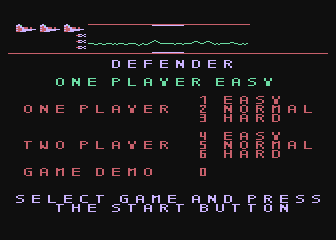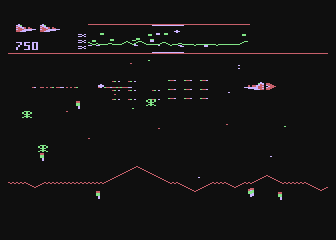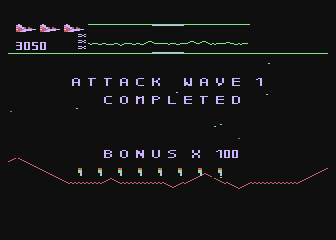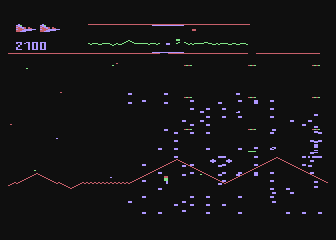|
|
Defender
|
Name:
|
Defender |
 |
| Company: | Atari | |
|
Model #:
|
CX-5218 | |
|
Programmers:
|
Atari 8-Bit Version: Steve
Baker Atari 5200 Port: Harry Brown |
|
| Year: | 1982 | |
|
Released?
|
Yes
|
|
|
Notes:
|
Programmer Steve Baker also programmed Defender's sequel Stargate |
Defender was an instant classic when it hit the arcades in 1980 due its unique blend of speed, difficulty, and addictive gameplay. But did you know that Defender was actually deemed to be a flop when it was shown for the first time? It seems that most experts thought that Defender's high difficulty level would turn off most causal gamers, but in a strange twist of fate it would be that very difficulty that would end up making Defender one of the highest grossing games in history (well over a billion dollars). For it seems that many gamers would spend hours studying the enemy's patterns trying to come up with a strategy that would allow them to survive just a little bit longer (pumping in quarters the whole time).
Needless to say Atari had to have this arcade juggernaut for its home systems and versions were planned for the Atari 2600, 5200, and 400/800. While the 2600's limitations made the VCS version somewhat of a disappointment, the 5200 was capable of bringing Defender home in all its arcade glory. However instead of tapping one of their internal programmers to program this version, Atari decided to bring in newcomer Steve Baker to handle the programming. Steve was no stranger to Defender, he had once written a version of it for the Apple IIe while learning to program, so he was a natural to bring it to the 5200.
Since the 5200 controller has two buttons it makes playing the game a breeze. No longer do you have to move to the bottom of the screen or hit the spacebar to use a smart bomb, now mass death and destruction are a simple button press away. Hyperspace is handled by pressing one of the keypad buttons, which actually makes it useful since you can actually hit it quickly enough to get out of trouble. This was a huge problem in the Atari 400/800 which required you to hit a key on the keyboard to hyperspace. The non-centering 5200 controllers don't seem to hinder the gameplay at all and seem quite natural after a few minutes. Interestingly Defender supports the 5200 trak-ball (although it's not recommended) even though it wasn't released until nearly a year later. The instruction manual even lists it as a "future accessory".
The graphics in this version are fairly spot on and show the 5200's ability to bring the arcade experience home (which is good since it was supposed to be the home arcade machine). The sounds aren't exactly the same as they are in the arcade, but many people (including myself) actually like them better. There's only a slight hint of slowdown and flicker present in the game, and only when there's a mass of enemies on the screen. However it's the gameplay where Defender really shines, Steve put alot of effort into this version to make sure it was 100% arcade accurate and it shows. Overall the 5200 version of Defender is one of the best arcade ports on the 5200, and certainly belongs in every 5200 owners library.
| Version | Cart Text | Description |
| 8/15/82 | Def. | Final Version |



